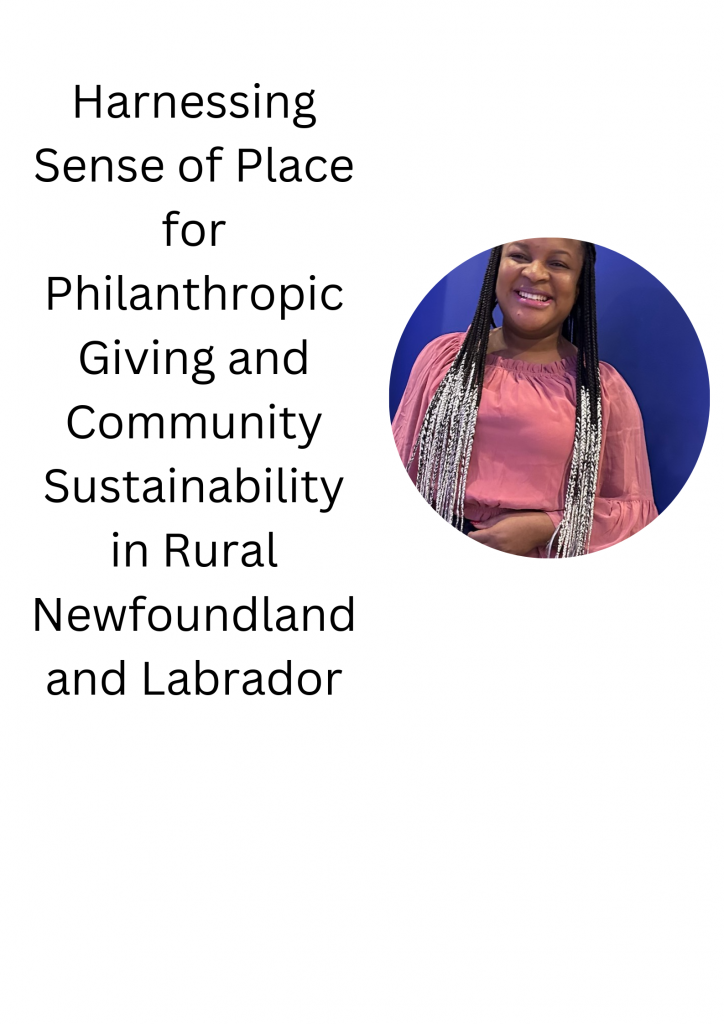Description of Proposed Research
By: Amanda Asiamah, PhD Student, Transdisciplinary Sustainability, Grenfell Campus
Newfoundland and Labrador has a greater number of rural (594) charities than urban (559) as of 2020 (Le, et al., n.d.). Research shows that rural philanthropy contributes to building local capacity by leveraging on existing assets and increasing the extent and effectiveness of rural investment from private and public entities, in addition to the traditional grant making (Kubisch et al., n.d.). Community foundations are particularly useful in finding means by which local communities can make the most out of their existing local assets (Gibson et al., 2014). This project is intended to help enhance our understanding of the reasons for what has been identified as a weak philanthropic landscape in NL, particularly when it comes to giving through community foundations, as well as potential ways barriers encountered might be overcome. Gibson et al. (2014), for example identified 191 community foundations in Canada. These represented every province and the Northwest Territories and 83 (43%) were located in a rural community. None of these were located in NL and this continues to be the case today. With few local foundations, options for rural residents to give to their communities are limited, despite a documented strong sense of place and propensity to donate in NL (Reid, 2020). We hypothesize that residents would give more in their communities if a community foundation or fund if such a mechanism(s) were available.
The research will aim to understand the unique challenges and opportunities for community foundations in rural NL through a mixed method approach using surveys, interviews and focus group discussions in two to three rural communities or regions where Philab has existing relationships, including Bay St. George region (pending confirmation of community support) .
The research questions are:
- Would charitable giving increase in rural NL communities if some form of community foundation were to exist?
- If yes, what forms of giving might be anticipated or possible? Annual donations? Major gifts? Other?
- What form of community foundation/charity would be most likely to be supported by residents of rural NL communities?
- Include consideration of new/future or mixed models such as social impact investing combined with traditional philanthropy.
- What factors might influence community members’ willingness to invest in their communities through community foundations in rural NL communities?
- How might community foundations support revitalization and sustainability in rural areas (e.g. are there specific target areas or identified priority needs of interest)?
- If potential exists for community foundations to contribute to revitalization and sustainability in rural areas, what supports are needed to pursue this need/opportunity?
References
